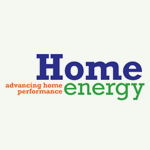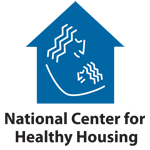|
|
Safety
We do not strictly control Google ad content. If you believe any Google ad is inappropriate, please email us directly here.
Sort results by: Date Added | Alphabetically - What it does, where it comes from, and what to do about it.
- For someone wishing to pursue the known, documented health effects of various materials, a Material Safety Data Sheet (MSDS) is the best place to start.
- Natural ventilation is becoming an increasingly attractive method for reducing energy costs while improving indoor air quality, according to green building advocates.
- Before choosing any paint, you may want to know more about the two basic types: oil- and water-based.
- It’s best to test several brands for appearance and personal tolerance.
- The nature of MCS and the mainstream response to this baffling condition.
- One of the greatest difficulties in estimating the toxicity of household products is the fact that most of the ingredients are not disclosed on product labels or other documents.
- Anyone who has washed or worn white clothes knows that white shirts stop looking white after a few washes and start to turn a shade of gray. A new laundry-detergent enzyme helps prevent this from happening, without the use of bleach.
- Chemists are creating a new generation of laundry detergents that work well in cold water, save energy, and have healthier ingredients.
- What you need to know about LEED for Homes.
- Bisphenol A (BPA) is a chemical produced in large quantities for use mainly in the production of polycarbonate plastics and epoxy resins.
- Evidence is mouting that nanoparticles, too small to capture in a typical home air filter, are the most toxic type of air pollution.
- Using household cleaning sprays and air fresheners as little as once a week can raise the risk of developing asthma in adults, say researchers in Europe.
- Because of the odors and ingredients in most caulkings, it’s best to follow certain precautions when using them.
- Research shows that irradiation could be key to removing hard-to-reach pathogens inside fruits and vegetables.
- Ingredients in common household cleaning products may be harmful to our health.
- Making sense of green building programs.
- Volatile organic compounds, or VOCs, are common indoor air pollutants. Being volatile, they evaporate easily, and being organic, they contain carbon.
- Outgassing refers to the release of gases during the aging and degradation of a material. These volatile organic compounds (VOCs) can negatively affect our health.
- Ants, rodents, termites ... Keep what's bugging you outside – where it belongs.
We do not strictly control Google ad content. If you believe any Google ad is inappropriate, please email us directly here.



Information provided by The Healthy House Institute is designed to support,
not to replace the relationship between patient/physician or other qualified
healthcare provider.
Education Partners
Ads, ad links, products and content on this page are not necessarily endorsed by these organizations.
|

We do not strictly control Google ad content. If you believe any Google ad is inappropriate, please email us directly here.
|








